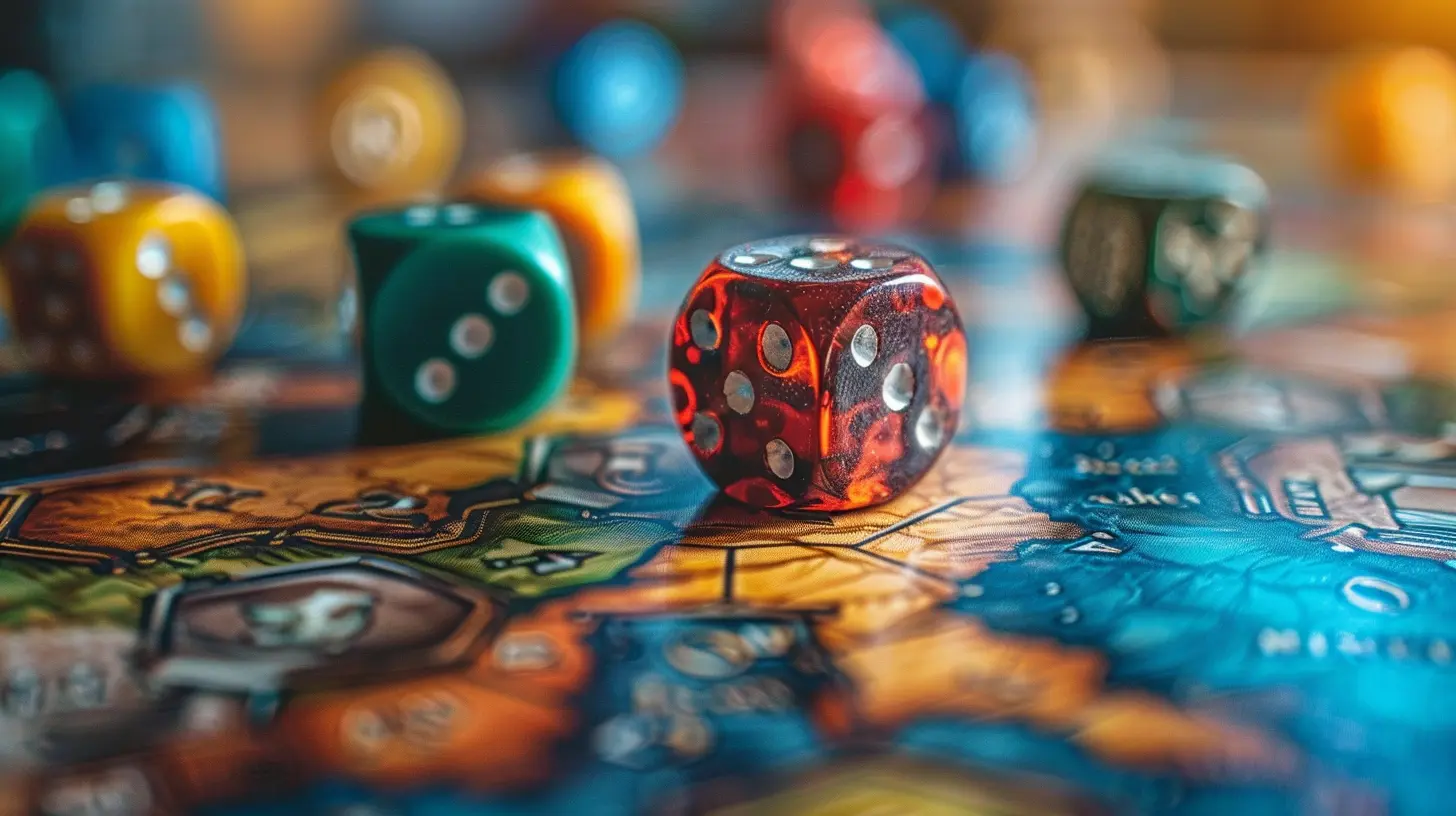The Role of Playtesting in Finding the Right Balance
10 September 2025
If you've ever played a game that felt just right—where the difficulty escalated perfectly and the mechanics flowed naturally—you probably didn’t think too much about what went on behind the scenes. But let me tell you a secret: those seamless experiences don’t happen by accident. They’re the result of hours and hours of playtesting. Yep, good old-fashioned trial and error.
In this post, we're diving deep into the role of playtesting in finding the right balance in games. Whether it's a simple mobile puzzle game or a sprawling open-world RPG, playtesting is the unsung hero of game development. So, buckle up!
What Exactly Is Playtesting?
Before we go further, let’s clear the air. What is playtesting, really?In the simplest terms, playtesting is when you hand your game—unfinished, unpolished, and possibly broken—to players and watch what happens. You're not just looking to see if they like it (though that’s nice); you're measuring how the game holds up in real-world conditions. You analyze what’s too hard, what’s too easy, and what might be downright confusing.
Imagine baking a cake without tasting the batter. Sounds risky, right? That’s what skipping playtesting is like in game development.
Why Game Balance Is So Important
Game balance is that sweet spot where a game is challenging but not frustrating, rewarding but not too easy. It’s what makes players say, “Just one more round,” and then suddenly, it’s two in the morning.Without balance, games fall apart. Boss fights become chores, multiplayer matches feel unfair, and mechanics that looked great on paper end up being ignored or, worse, exploited.
Think of game balance like tuning a guitar. If one string is off, even slightly, the whole song sounds off. Playtesting is how developers tune each “string” of the game to harmony.
The Different Types of Playtesting
Not all playtests are created equal. Different stages of development require different approaches.1. Internal Playtesting
This is the first line of defense. Developers, designers, and QA testers play the game and iron out the obvious kinks. Internal playtesting is fast, efficient, but also biased. You've been staring at the same thing for months—it’s hard to see clearly.2. Closed Playtesting
Now it's time to bring in some fresh eyes—usually friends, influencers, or dedicated fans. You want honest feedback but still in a somewhat controlled setting.3. Open Beta Testing
This is the big one. When you release a beta to the public, you're letting the crowd in. Good news? You get a ton of data. Bad news? That data can be overwhelming. But if used correctly, it’s a goldmine for balance tweaks.
How Playtesting Helps Find Balance
Catching Overpowered or Underpowered Elements
Ever played a game where one weapon or character completely outshines the rest? That’s a balance failure—and playtesting is the fix.Players will naturally gravitate toward the “broken” stuff. That’s your clue. When everyone picks the same hero in a team shooter or spams the same spell in an RPG, you know there's an issue.
Adjusting Difficulty Curves
A game shouldn’t punch you in the face after level one and then take a nap by level five. Consistent, escalating challenge is key. But hitting that curve just right? That’s where playtesting shines.Watching when players die, where they struggle, or even when they quit outright gives you incredible insights. If 70% of players drop out after the tutorial, you’ve got a problem.
Testing Game Flow
Balance isn't just about difficulty—it’s also about pacing. Are matches dragging on too long? Are puzzle levels solved too quickly? Playtesting lets you adjust so the game feels like a ride rather than a crawl.Validating Design Assumptions
Let’s be honest: developers have blind spots. You might think your risk-reward mechanic is genius, but if nobody uses it, does it actually work? Playtesters don’t care about your vision—they'll tell you what's fun. That’s priceless.Player Feedback: The Secret Sauce
Raw data is great (win rates, completion stats, etc.), but don’t underestimate the power of good old feedback. Ask players:- What felt too hard?
- What did you enjoy most?
- What would you change?
The answers might sting, but they’ll guide you straight to the balance sweet spot. Sometimes players won't even know why something felt off—they just know it wasn’t fun. That's your cue to dig deeper.
Iteration: The Magic Word
If there's one thing you take from this article, let it be this: playtesting is only useful if you actually act on it.Playtesting isn’t a one-and-done deal. It’s a cycle—test, tweak, repeat. Remember, even the biggest studios run multiple rounds of playtesting before release. Yes, even the likes of Blizzard, Nintendo, and FromSoftware!
So if you're a solo dev or an indie studio? Embrace iteration like your life depends on it. Because, in gaming terms, it kinda does.
Balance in Multiplayer vs Single Player Games
The playtesting process differs depending on the type of game you're creating.Multiplayer
Multiplayer games are a balancing nightmare—in the best way. You’ve got to juggle characters, loadouts, maps, spawn rates… the list goes on. You’re not just balancing difficulty; you're balancing fairness.Here, playtesting is about detecting exploits, gauging community meta, and preventing power creep. Frequent updates based on ongoing testing (both internal and community-driven) are essential.
Single Player
In single player games, balance leans more toward pacing, enemy scaling, and resource management. Playtesting helps ensure players feel powerful and challenged as the game progresses.You're not fighting other players—you’re fighting boredom and frustration.
Real-World Examples of Playtesting at Work
Fortnite
Epic Games constantly tweaks Fortnite based on player behavior. From nerfing overpowered weapons to adjusting building mechanics, everything is data-driven—and tested.Dark Souls Series
FromSoftware is legendary for its difficulty balance. While brutal, their games undergo rigorous internal and external testing to make sure every death feels fair.Among Us
The social deduction in Among Us only works because roles and tasks are balanced, thanks to tons of player feedback and testing. Imagine if Impostors always won. Wouldn't be much fun, right?Common Challenges in Playtesting for Balance
Playtesting isn’t always smooth sailing. Here are some hurdles devs often face:- Bias: Early testers might know the team and sugarcoat their feedback.
- Over-reliance on Metrics: Not everything can be solved with numbers.
- Feedback Overload: Too much feedback can paralyze your decision-making.
- Time Constraints: Sometimes you just don’t have enough time to test everything.
- Fix One, Break Another: Tweaking one element often affects others. It's a game of whack-a-mole.
But hey, welcome to game dev!
Best Practices for Effective Playtesting
Here are a few tips to make your playtesting actually count:1. Start Early: Don’t wait until the final weeks.
2. Define Objectives: Know what you're testing and why.
3. Use Diverse Testers: Different skill levels reveal different problems.
4. Record Sessions: Watching someone play your game can be eye-opening.
5. Stay Open-Minded: If everyone’s confused, it’s not them—it’s your design.
6. Track & Analyze: Use both qualitative feedback and quantitative data.
7. Don’t Rush Changes: Not all feedback needs immediate action. Spot trends, not outliers.
Conclusion: Playtesting Is Balance’s Best Friend
Let’s get real. No matter how clever your mechanics, how stunning your graphics, or how gripping your story—if your game isn’t balanced, players will walk. Or worse, rage quit and leave a bad review.Playtesting gives your game the polish it needs. It surfaces flaws, validates strengths, and—most importantly—it puts the player at the heart of the experience.
So if you're making a game, don’t just hope you get the balance right. Test it. Play it. Break it. And test it again.
Because when a game feels just right, that’s not magic—it’s playtesting.
all images in this post were generated using AI tools
Category:
Game BalancingAuthor:

Pascal Jennings
Discussion
rate this article
1 comments
Zephyris McIlwain
Great article! Playtesting really is the unsung hero of game design. Finding that perfect balance can make all the difference in player experience. Keep up the awesome work!
September 20, 2025 at 3:58 PM

Pascal Jennings
Thank you! I'm glad you enjoyed the article. Playtesting truly is vital for creating a great player experience!


